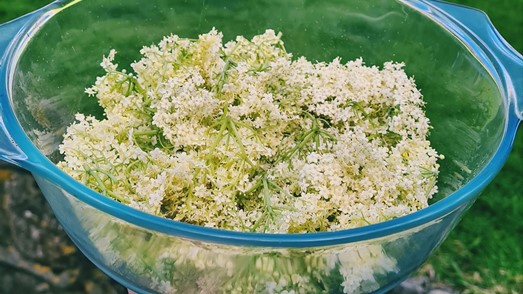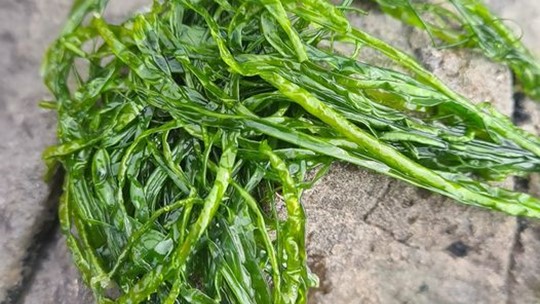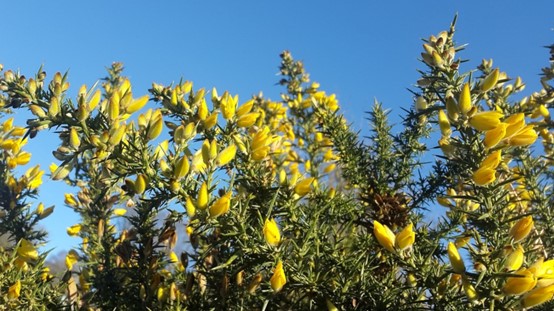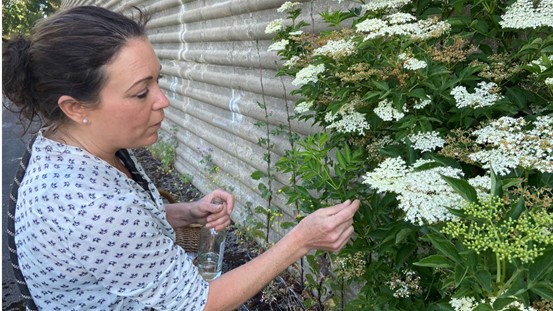Take part in a walk finding edible plants in Wales and everyone can make their own food easily, an experience about foraging outdoors, and learning how to turn Elderflowers into wine.

Have walked with a professional, Chloé, around the estuary of Wales, I have pleasantly found myself truly enjoyed the moment looking for a purely wild edible plant for the first time. The moment I got to the place, all I saw was just an overgrown area but nothing else, Chloé has really enlightened me by telling me all she sees is a great array of tasty food.
Initially, I was hesitant about this idea, as this is something new to me, especially what can be found within an hour and a half from the estuary of Chepstow, adjoining England to the east. But after having checked online, I found some groups are particularly interested in this in Wales, and usually they are fully booked.
Until I met with a professional, Chloé Newcomb Hodgetts, as a Ph.D. in Chemical Ecology, she has lived in South America for more than a decade, developed a lifelong experience with foraging from her early ages, her passion for foraging hasn’t ever been depleted and gained a lot of experience during that time.
The equipment I brought with me includes: Comfortable, weather-appropriate clothing, a camera or the built-in on your phone can be handy, notepad and pen, drink, a basket, or you can also bring a cloth bag for collecting edibles to take home with.
We started off from the car park of her ‘office’, a completely naturally grown botany under the bridge lays in front of our eyes, which are all free of pesticides and pollution. She asked me ‘What are your expectations today? As in how many edible plants you would wish to find. I said maybe give or take 5 to 6 of them, she then immediately said I can help you find 6 of them in 5 minutes, and we have the whole morning! As we were walking in the picturesque estuary under the Severn bridge, Chloé pointed to me almost 15 different types of that can be eaten.
As we were walking in the picturesque estuary under the Severn bridge, Chloé pointed plant to me along the way and we picked almost 15 different types of that can be eaten and have explained that each plant has its own perfect window to pick, some could be as long as a year, while others have a small window.
Lianne Carruthers has been developing her knowledge and doing research around foraging for the past two years, after she found her passion for foraging, she started a Facebook group Foraged by Lianne, she has also shared her knowledge of how foraging works, there is always something to be found from nature in four seasons.
‘The foraging season starts around February time where you can find Scarlet Elf Cup mushrooms, which can be easier spotted as they give a splash of red color on the dull embankments of winter.’
‘As spring arrives around March there’s an abundance of spring greens you will come across Wild Garlic, Cherry Blossom, and Nettles. Between May and August is the best time for foraging, the summer months give a surge of life. At the coast you can find plenty of Seaweed, most seaweed is edible and safe to eat. On land, you can find Elderflowers, Cherries, Meadowsweet, and Wild Strawberries.’
‘Autumn is where it gets really interesting, plants bring forth their fruits, seeds, and mushrooms crop up everywhere. Juniper berries, Hazel, Chestnuts, Wood mushrooms, and Sloes can be made into Sloe Gin! When winter brings in the short days the earth pulls back its nutrients into the ground. Even on the darkest days, there’s always something to forage. This is the best time to cook off some Dandelions’ roots on an open fire. The velvet shank Mushroom can frequently be found throughout December.’

Picture from: Lianne Carruthers
Particularly we have found the Elderflowers from a crevice under a cement pillar, this type of flower came from elder trees, it’s really common because its small shrub can be found across the UK from a roadside and in woods, and is edible from its tiny white flowers to berries, but if it’s raw, they are slightly toxic. Pick up one flower and put it in my mouth, the flower gives the taste of cheery, floral, herbal flavor, yet it goes away quickly. She taught me the flower can be herbal tea, and if it’s added to cake, muffin, or scone, it appears a sweet-tart and floral flavor.
Lianne has introduced that Elderflowers can usually be found during June, particularly when it’s a sunny day so that the buds are fully bloomed, and the berries ripen in September.

Prior to I visit there, I have never thought that the plant can have so many different tastes. Scurvy grass tasted mustard, garlic, and other smells like lemon/tangerine, many plants can be a substitute as a garnish for the food, like Forget me not.
Most of them can be simply turned into an herbal tea by thoroughly washed and poured hot water into it, stems of the Marshmallow root are the ingredients of making marshmallows, some were used to brew beers, and Maritime Pine leaves soaked with gin can give an extra fresh flavor, wild cabbage was tamed by sapiens into cabbages, cauliflower, kale, broccoli, and collards, wild garlic can turn into pesto, hedge bedstraw was used to make the mattress. The medicinal usage and the history of humans were truly stunning.
Although it was a pity for me that I wasn’t visited the place at the correct time of the year, I was lucky enough that yesterday wasn’t raining. I was fascinated by the way she introduced every plant, it felt just like she was introducing her friends to me.
We ended up finding a huge array of plants that are edible, including Forget me not, Yarrow, Cleavers, Wild garlic, Wild cabbage, Elderflowers, Ale Hoof, Sea plantain, Sea Beet, Sea Asters, Scots Pine, Maritime Pine, Arrow Grass, Clovers, Coriander, Fennel, as my favorite, and etc.
Although Chloé said it usually takes a while for the amateurs to find their perfect foraging spot, maybe even years sometime, I could feel her passion for foraging. Whenever she gets close to one type of plant, it’s quite obvious for I can see she would want to tell me everything about this plant, even when it’s a Latin name, and it’s a bit hard for me to remember, she would let me know how to identify them potentially.
Also, she would suggest that if you have any doubts about if one type is edible, don’t try it, and always check first from references. Along the way we headed back to where we started, she told me she could stop herself from looking for edible plants even when she was driving to a friend’s house.

Picture from: Lianne Carruthers
Lianne shared an exclusive recipe for making your own cordial that has been tested several times and tasted good. She said ‘Elderflowers are found throughout Wales and the UK until around the end of June. Ensure enough is left for the Elder Berries in late summer. You can mix with sparkling water to create elderflower pressé, add to wine, prosecco, or champagne to start a summer party in style!’
Makes 2 liters of Cordial. 25 Elderflower Heads. Zest 3 Lemons and juice. Zest 1 orange and juice. 1 heaped tablespoon of Citric Acid. 1kg Sugar
Place flowers in a large bowl and add the zest and juice (approx. 150ml). Bring 1.5 liters of water to boil and pour over the flowers and leave for 24 hours. The next day strain through the juice of the lemons, oranges, and Elderflower through a muslin cloth. Place the strained juice into a deep pan, then add the sugar and citric acid. Heat for a couple of minutes to dissolve the sugar. Then pour the hot syrup into sterile bottles, the cordial will keep in the fridge for 2-3 months.
‘Take no more than you plan to consume and double-check the identity of the plant before eating and cross-reference with poisonous species.’
Notes given from Lianne is that in case there will be certain habitat loss in some area, always forage sustainably and responsibly whilst staying safe, and for those who are doing this for the first time, ‘Food for free’ and ‘the Foraging Calendar’ are recommended for referencing, always cross-reference when trying anything new.

Picture from: Lianne Carruthers
As a professional, Richard Mabey as the author of ‘Food for free’, as a broadcaster and writer, and a pioneer of finding wild free food, and promotes eating healthy, his passion for nature developed after the depression episode, his contribution is not only limited to botanical research and writings but also finding ways thinking the link between nature and human lives. Being a pioneer in British nature writing for 5 decades, his groundbreaking research has become a leading from peers, and plant bible.
‘It’s something that you can never stop learning, you can take so many different directions, and learn from websites and applications.’ said Chloé.
